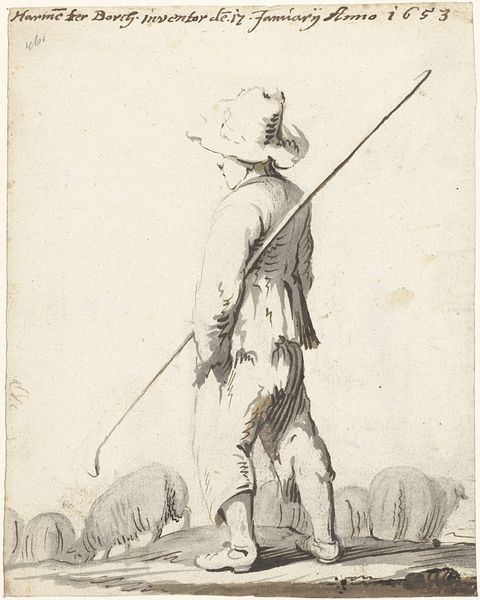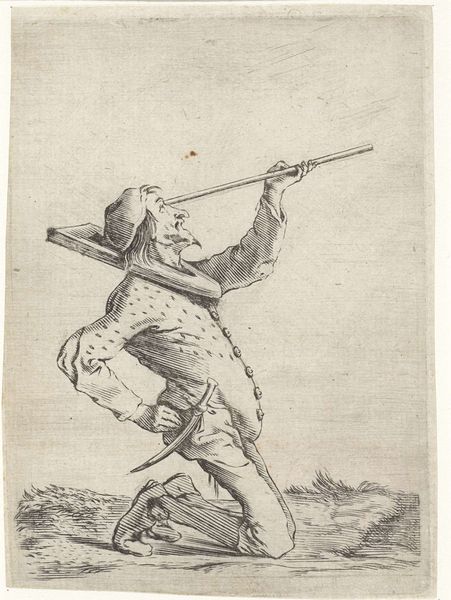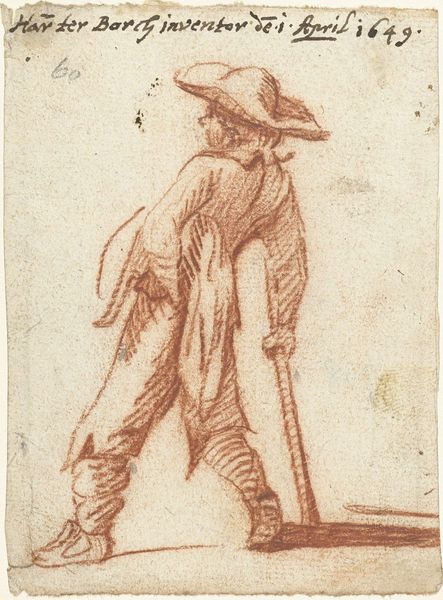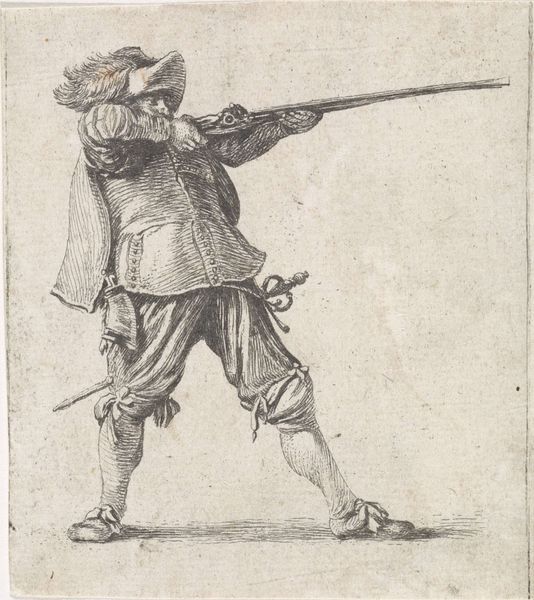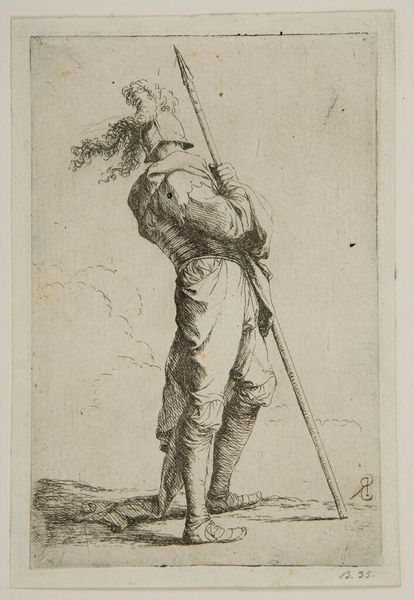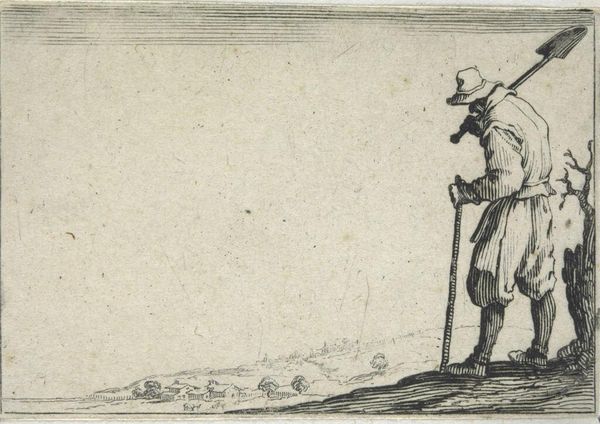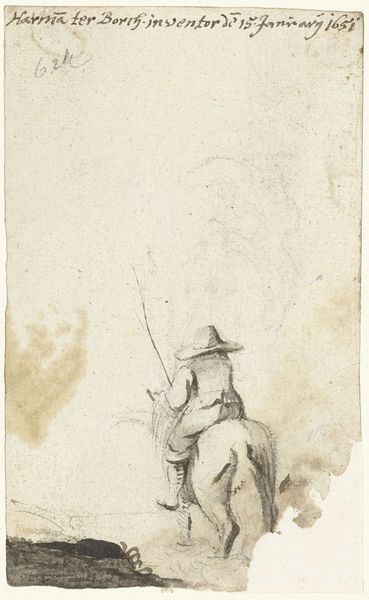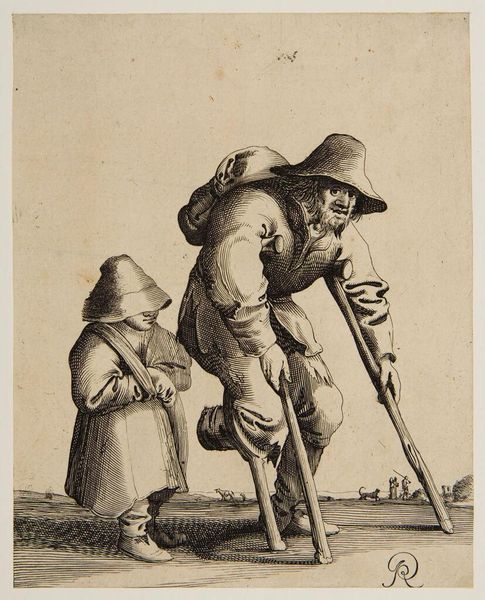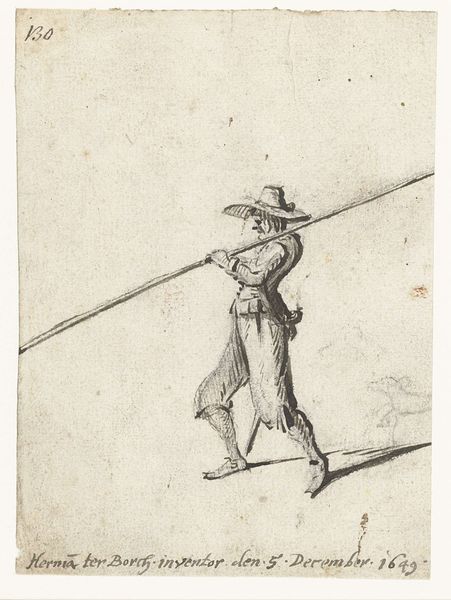
drawing, ink
#
drawing
#
baroque
#
landscape
#
figuration
#
ink
#
genre-painting
Dimensions: height 100 mm, width 72 mm
Copyright: Rijks Museum: Open Domain
Curator: What do you make of this sparse drawing of a kneeling soldier from the early 18th century? Its title is “Kneeling Soldier, Aiming His Weapon.” It’s ink on paper by Dirk Maas. Editor: It projects an almost melancholic stillness. The vast blankness of the paper surrounds this solitary figure in such stark relief, and makes the scene seem so remote and muted. Is this the banality of pre-battle stillness, do you think? Curator: It’s intriguing how Maas positions the soldier—kneeling, aiming, yet entirely disconnected from any visible target or context. This creates a powerful sense of anticipation and focused intent that feels almost… abstract. Consider the intricate detailing in the soldier's garb against the deliberate void surrounding him. What might this compositional choice signify? Editor: Well, perhaps it mirrors the soldier’s own isolation, his detachment from the bigger picture of whatever conflict he’s a part of. He's a cog, after all, and the absence of setting underscores that. He could be anywhere, fighting for anything; the system remains unchanged, and the result, usually violent. Curator: Yes, it’s almost a generic depiction of military action. I find myself dwelling on the interplay of line and space. The precise, almost technical depiction of the weapon contrasted with the softer treatment of the clothing, how does this strike you? Editor: Given the period, between 1708 and 1717, it invites consideration of the sociopolitical climate of constant warfare. I think the somewhat soft and unassuming visual style normalizes it. We cannot disassociate the image of the soldier from, perhaps, a time of recruitment efforts and political rationalization, eh? Curator: A good point. Thinking solely in terms of form, I remain captivated by how Maas utilizes ink to achieve such variation in texture and tone. Editor: It reminds us of the power that even minimal gestures can have to symbolize conflict, purpose, and the quiet solitude of the soldier. It also serves as an emblem of systemic problems that keep producing that figure and perpetuating violence. Curator: Precisely, there is always an element of paradox when something is this simply stated but holds complex conceptual possibilities. Thank you for elucidating those latent contextual layers that complete its resonance. Editor: A necessary reading, but your eye for composition always lends valuable perspective!
Comments
No comments
Be the first to comment and join the conversation on the ultimate creative platform.

